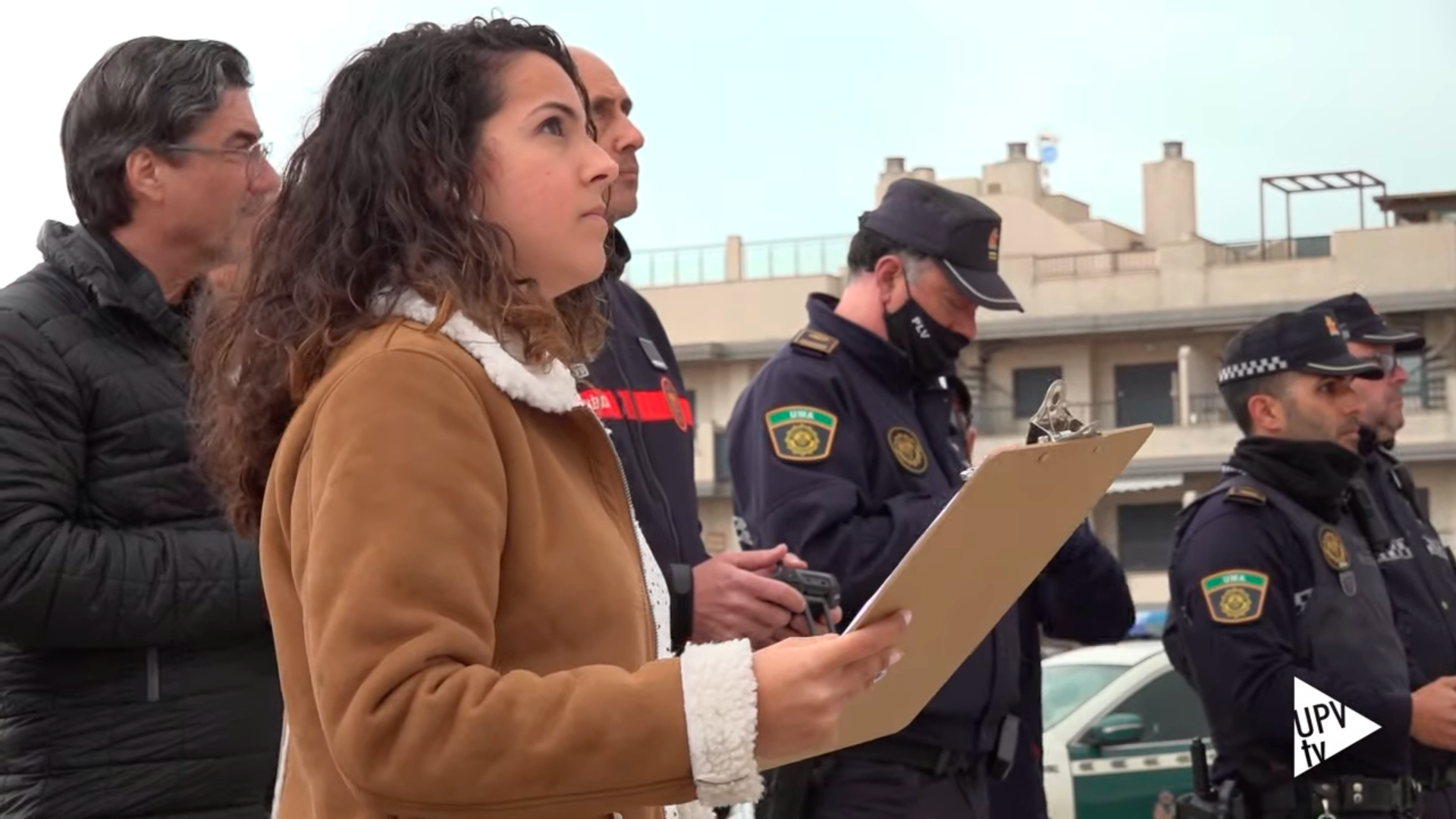
The Universitat Politècnica de València (UPV) has carried out the first massive and simultaneous flight of drones in Europe and presented an innovative platform that helps to avoid collisions in the airspace. It has done so in the framework of BUBBLES, a European project coordinated by UPV’s ITACA Institute. BUBBLES aims to ensure the safe integration of drones, with an eye on the new European drone airspace management regulations coming into force next year.
«The European regulation governing the provision of U-space services was approved in April 2021 and will become fully applicable in January 2023. From this date, drones in Europe will have to comply with this regulation to ensure safe and efficient operations. Thus, the tests we are carrying out are ahead of this scenario. They are also the highest density of drones flying simultaneously of all those done so far in Europe,» said Juan Vicente Balbastre, a researcher at ITACA UPV and coordinator of the BUBBLES project.
Fourteen drones flew simultaneously, all of them managed by the BUBBLES platform, which allowed them to be controlled and monitored in real-time in the flight area, an area of 15 km2 between the Valencian towns of Puçol and El Puig. Although the tests were conducted in a rural environment, due to current regulations, this scenario would represent drone operations in any European urban environment in the coming years.
Each drone flew simultaneously with simulations of real applications: traffic surveillance, maritime rescue, search and rescue, freight transport, precision agriculture, and industrial inspections. While the drones were flying, the BUBBLES platform detected possible conflicts due to loss of separation, sending alerts to the pilots involved so that they could collide.
«BUBBLES generates safety bubbles around each drone based on algorithms that calculate the risk of collision in real-time. And, if there is one, the platform is even capable of proposing an evasive manoeuvre to the pilots, taking into account their position, as well as that of the drones that are in what is known as tactical conflict,» said Israel Quintanilla, president of the UPV Drone Commission and also a member of the UPV team in the BUBBLES project.
Vertiport
In addition, this morning, the use of a vertiport was also simulated, from which nine drones took off with different missions and returned to land along a vertical corridor monitored by small radar antennae. «This exercise aimed to validate the management of separation in these places – the vertiports – which will be the take-off and landing points for drones in cities to transport various goods and passengers», explained Quintanilla.
The flight, a pioneer in Europe, involved representatives of the Local Police and Fire Department of Valencia, the Local Police of Benidorm, the Pegaso team of the Civil Guard, the Valencian Agency for Security and Emergency Response (AVSRE), specialised companies in the sector (ASD drones, UAV Works, AsDrón Spain), and the UPV’s own operators.
The use of drones has overgrown and is expected to continue in the coming years. Parcel delivery, public safety and entertainment are just some of the possible services. There will be more and more drones, and their economic impact will be very high. Still, it is necessary to ensure their safe integration into the airspace. And this is what we continue to work on within BUBBLES,» said Juan Vicente Balbastre.
In addition to the ITACA Institute, the UPV’s Institute of Automation and Industrial Informatics (AI2) and the Department of Cartographic Engineering, Geodesy, and Photogrammetry participate in the project. The BUBBLES consortium is completed by the University of Coimbra, the Università Degli Studi di Roma La Sapienza, the European Organisation for the Safety of Air Navigation (EUROCONTROL) and Indra, a world leader in air traffic management.
Funded by the European Union through Horizon 2020 and SESAR JU with more than €1.9 million, the project will be completed by the end of this year.
More info:
News on UPV TV
Source: UPV’s Information Office




